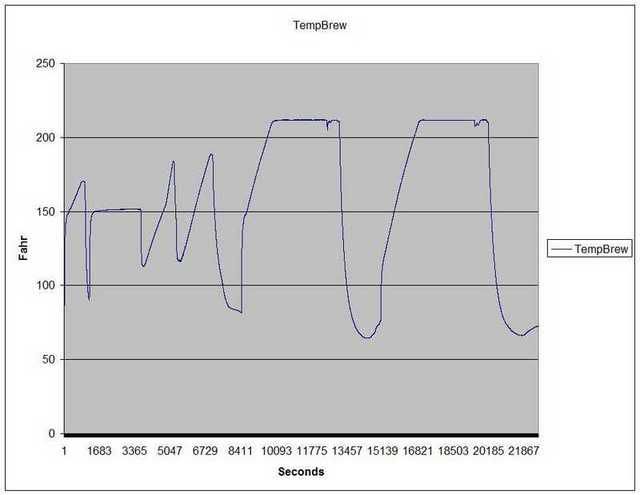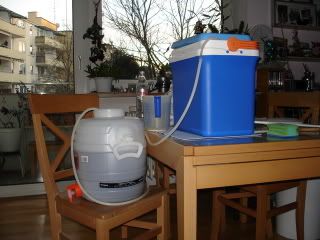After doing some research, I have determined what the difference between a stout and a porter is. The reason for the research, was due to limited grain resources on hand. Currently I have these grains in stock:
- Weizen (Wheat)
- Pilsner
- Wiener (Vienna)
- Munich
- Caramunich II
- Carapils
- Chocolate Malt
- Roasted Barley
Now, I have wanted to make Jamil's CHP (Chocolate Hazelnut Porter) for a long time. Due to some forethought on my part, I made sure early on that I acquired Hazelnut extract, although I did not put enough forethought into what specialty grains/malts I should have on hand though. So at the end of the day, I am not able to brew Jamil's recipe, but a clone of a microbrew porter with the CH part.
The difference between a porter and a stout... the differences I am concerned about are the ones pertinent to this recipe. I could substitute (or have) everything but one ingredient, Black Patent Malt. Porters are "all malt", while stouts can have things other than malt (like "Roasted Barley).
So, I do have roasted barley. I thumbed through BYOs recent clone recipes magazine, and found a porter that contains ingredients that I have on hand. Now, I think this might technically not be a porter, since it does have roasted barley, and I have read that you must NOT-NOT-NOT put that in a porter.
Well, I will brew Bridgeports "Porter" recipe from BYO. Now, the recipe I will show is pretty identical to the one published, except I scaled it down, and substituted in Pilsner for 2-row, and Caramunich for the Crystal. Otherwise, it is identical. The SRM, IBU, OG/FG are close enough.
On brewday, the smell of the wort seemed a little too roasty for me. It tasted like reasonably good unfermented beer. In time the roastyness will die, or? Upon bottling, I will add in the Hazelnut extract... here is the recipe ->
Chocolate Hazelnut Porter (probably stout, but a Bridgeport Brewery clone) I
12-B Robust Porter

Size: 14.45 L
Efficiency: 81.49%
Attenuation: 75.5%
Calories: 199.9 per 12.0 fl oz
Original Gravity: 1.060 (1.048 - 1.065)
===================#============
Terminal Gravity: 1.015 (1.012 - 1.016)
==================#=============
Color: 27.6 (22.0 - 35.0)
==============#=================
Alcohol: 5.95% (4.8% - 6.0%)
=======================#========
Bitterness: 34.22 (25.0 - 50.0)
=============#==================
Ingredients:
6.6 lbs Pilsner Malt
1.0 lbs Caramunich® TYPE II
0.38 lbs Chocolate Malt
0.57 lbs Roasted Barley
0.43 oz Magnum (15%) - added during boil, boiled 60 min
0.47 oz East Kent Goldings (5.7%) - added during boil, boiled 5.0 min
6.0 oz Cocoa Powder - added during boil, boiled 5 min
18.75 mL Hazelnut (extract) - added dry to secondary fermenter
Schedule:
00:03:00 Mash In - Liquor: 8.9 L; Strike: 167.0 °F
01:03:00 Rest - Rest: 60.0 min
01:04:00 Infusion - Water: 4.48 L; Temperature: 206.8 °F
01:34:00 Sparge - FirstRunnings: 0.0 L sparge @ 168.0 °F, 8.5 L collected, 15 min; Second: 8.5 L sparge @ 170 °F, 8.5 L collected, 15 min; Total Runoff: 17.0 L
Notes:
Results generated by BeerTools Pro 1.0.20








